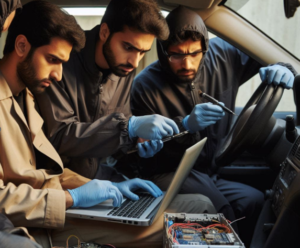Unraveling Secrets: Forensic Analysis of Vehicle Infotainment Systems
In today’s digitally interconnected world, vehicles are no longer just means of transportation; they have become rolling computers on wheels. With sophisticated infotainment systems integrated into modern cars, these vehicles store a treasure trove of digital data that can be invaluable in forensic investigations. From navigation history to call logs and even Wi-Fi network connections, vehicle infotainment systems hold a wealth of information waiting to be uncovered by forensic analysts. In this blog post, we delve into the fascinating realm of forensic analysis of vehicle infotainment systems, exploring its importance, challenges, and methodologies.
The Importance of Vehicle Infotainment Forensics:
Vehicle infotainment systems have evolved to become central hubs for entertainment, communication, and navigation within vehicles. As a result, they often store a wide range of digital evidence that can be crucial in various types of investigations, including accidents, thefts, and cyber crimes. Forensic analysis of these systems can provide valuable insights into the activities and behaviors of vehicle occupants, as well as help reconstruct events leading up to incidents.

Challenges in Vehicle Infotainment Forensics:
Despite their importance, forensic analysis of vehicle infotainment systems presents unique challenges. Unlike traditional computing devices, infotainment systems in vehicles vary significantly in terms of hardware, software, and data storage mechanisms. Additionally, these systems are often proprietary and lack standardization, making it difficult for forensic analysts to access and extract data consistently across different vehicle makes and models. Moreover, ensuring the integrity and admissibility of digital evidence obtained from vehicle infotainment systems in legal proceedings requires meticulous documentation and adherence to forensic best practices.

Methodologies in Vehicle Infotainment Forensics:
Forensic analysis of vehicle infotainment systems typically involves a multi-step process that begins with acquiring physical or logical copies of the system’s storage media. This may include extracting data from onboard hard drives, solid-state drives (SSDs), or removable media such as USB drives and SD cards. Once the data is acquired, forensic analysts employ specialized tools and techniques to parse through the extracted data, identify relevant artifacts, and reconstruct user activities. This may involve analyzing navigation history, call logs, text messages, multimedia files, and other digital artifacts stored within the infotainment system. Furthermore, analysts may utilize reverse engineering techniques to understand the proprietary file formats and data structures used by different vehicle manufacturers, enabling them to extract and interpret data effectively.

Case Studies and Real-World Applications:
To illustrate the practical applications of vehicle infotainment forensics, we present real-world case studies showcasing how digital evidence extracted from infotainment systems has been used in investigations. From uncovering the cause of accidents to tracing the movements of suspects and corroborating eyewitness testimonies, these case studies highlight the pivotal role of forensic analysis in unraveling the mysteries hidden within vehicle infotainment systems.
View original post here from May 1, 2024
By :Kanajam Ananthapurnasai Digital Forensics Investigator || (Ethical Hacker & RED TEAMER) || Top 1% in TryHackMe || Web Pentester || CTF Player || Freelancer to do VAPT || CHFI ||
Contact Granite Discovery to learn more about our services and how we can help you.




